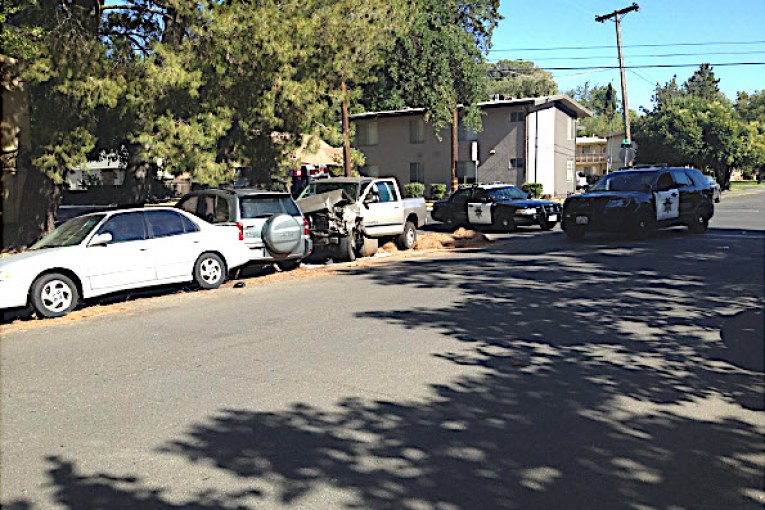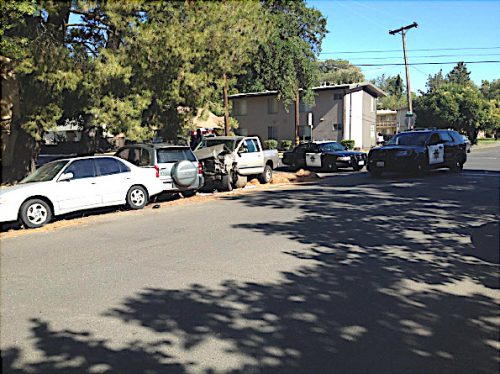

(The following is a letter via email by Marilyn Underwood, President of ONDNA to the City Council and copying the City Manager on April 30, 2017)
Dear City Council and City Manager,
I am currently serving as the President of the Old North Davis Neighborhood Association (ON DNA). This email is a follow-up to public comment by Steve Tracy, commenting for the ONDNA board, at the November 2016 city council meeting. We have heard nothing about the request for traffic calming that was requested in that public statement
Old North Davis was created in 1912 and comprises the neighborhood between 5th Street, 7th Street, B Street, and the rail road tracks. Our neighborhood has roughly 500 residents in 175 homes or apartments. We are asking the City Council’s help in creating a safer environment for those residents on the streets of Old North.
As the result of excessive speed or other recklessness, over the past decade there have been well over 300 crashes in Old North Davis. They have occurred at every single intersection in or bordering our district. Roughly 50 of those crashes occurred on interior streets in our neighborhood, not on 5th Street
The attached photos show crashes along 6th Street, a quiet residential street that serves only a quarter mile of homes.
Almost 50 of the total number of incidents on streets in and bordering Old North Davis involved pedestrians or bicyclists – residents the General Plan refers to as “vulnerable users.” And vulnerable they are. Many passengers in motor vehicles walk away from the crashes recorded in our neighborhood, but almost every bicyclist or pedestrian hit by a car during the past decade has been injured.
In early 2012, responding to our pleas for relief from this misbehaving motorist toll, a traffic calming plan for Old North Davis was prepared by Alta Planning and Design, with funds allocated for that purpose from the 5th Street redesign project Residents, City staff, and consultants toured the neighborhood to discuss problem areas and possible solutions. Concepts were drawn out at the Senior Center, and refined by Alta staff.
This traffic calming plan has recently been referred to by staff as a “schematic” in an attempt to characterize it as something less than a complete exercise. It’s not. It reflects what we want, and addresses the worst of our problem areas with solutions the consultant advised.
Reducing traffic speeds in the neighborhood by even a few miles per hour could greatly reduce injuries to pedestrians and bicyclists and most likely reduce incidents of damage to other automobiles other personal property. We have long believed much of the injury and property damage toll from these incidents could be less severe or avoided entirely if a few simple traffic calming measures were installed in the neighborhood.
The City of Davis already has a plan for installing traffic-caIming measures throughout the city. I’m asking that the City Council expedite this plan, and to place Old North as one of its priorities. The section of 0 Street between 7th and 5th Streets would greatly benefit from slower traffic, as D Street serves as a main traffic artery between 8th Street and downtown. Traffic-calming measures in Old North need not be elaborate or expensive. Narrowing street width by striping, additional stop signs where needed, and simple traffic circles at major intersections may be all that is needed to create a much safer traffic environment in our neighborhood.
Thank you for your consideration of this important issue. We would ask that we receive a response indicating how the city will proceed with this request.
Signed,
Marilyn Underwood, President of ONDNA

First of all, it’s hard to tell exactly what “schematic” and “complete exercise” mean in the formal sense. But it’s at clear that the neighborhood has made its wishes known. We need to support the Bicycling, Transportation and Street Safety Commission (BTSSC) and Council to push this forward. Staff is already over-worked and it seems to me that a clear direction for them will be empowering – it will ease the burden of trepidation and bring out their most progressive ideas. On the other hand I think it would be very useful – if they haven’t done it already – to persuade the representatives of all the neighborhoods bordering it to form consensus on the wishes described by Ms. Underwood.
Now to laws and money.
More about the former in a second but even with a few new progressive local and state laws cash will not suddenly appear. So I would like the City to consider buying lots of large plastic or metal barriers filled only enough to make it impossible for an individual to move them without equipment. These creative safety obstructions would be placed everywhere where speeds have to be reduced. They’d still be easy to adjust or move in certain events.
On signalized streets I also like to see more four way blinking amber lights or two-way amber/two-way reds used late at night. Among other things this will decrease frustration and the urge to speed up on local streets to compensate for an unnecessary stop. I’d like to see someone from Public Works or Caltrans accidentally poor a large glass of fresh – obviously local – tomato juice into the signal control unit at East Covell and Pole Line so that it’s all directions blinking amber until we get a proper, civilized, unsignalized roundabout here — we can then put these “pennyfarthing”-style signals into our new Traffic Hall of Lame. (Please execute me now: As a symbol of safety, gender-inclusivity and overall equity – the pennyfarthing/high wheeler bike fails miserably and has no place in a community with a forward thinking sustainable transport policy. Seriously, give “agriculture associations in USA” a Google… wbat do you see more of: modern tractors or horse drawn plows?)
Stop signs are not used on local streets with un-signalized intersections in most of Europe. Priority is used: So everyone is forced to think and stay aware and no one has to stop without reason. This decreases pollution, and makes things particularly positive for cycling. A car’s short journey near its destination or origin on non-arterial, non-collector streets at around 15 mph with slowing only at intersections is faster than one at 25 mph with multiple stop signs… and much safer for vulnerable users.
How to make things this way? Things are changing!
At their last meeting the BTSSC created a sub-committee on traffic calming — and it would be great if more people engaged with the BTSSC both at meetings and correspondence. They seem quite sincere and pro-active about making streets safer in Davis… and I haven’t heard a lot of empty calories about e.g. “balancing the needs of all road users” or projections of suffering children who can’t wait 20 seconds longer to get their ice cream.
Unfortunately also at the local level the most official opinion I’ve seen from the Davis Police Department is that getting people to drive slower than 25 mph when a situation warranted it would criminalize parents – I paraphrase based on the words of a Public Works staffer at a BTSSC meeting earlier this year describing a conversation they had with the DPD. (Yes, this is a little fuzzy so perhaps someone from DPD could make a statement about it – it could also help if their representative would stay for the entire duration of a monthly BTSSC meeting.)
And then – last but not least – it is worth noting that at the last BTSSC meeting Mayor Pro Tempore Brett Lee said that – in his opinion but to his credit – infrastructure in Davis was “average”. (Now I think he might have been referring to cycling specifically but in e.g. the Netherlands – a place he’d like to see us study quite closely via a Sister City exchange – all infrastructure is for everyone. Both cyclists and drivers like and are made safer by the holistic, sustainable – and frankly – mature and physics-informed transportation planning in their country.)
At the State level things are also moving forward: There’s a Caltrans plan in the works to give cities more control of local streets so that they could slow them down overall to e.g. 15 mph or slower limits – the City of Davis Council has endorsed this – and in the shorter term there’s a proposed bill that will give cyclists the right to only yield at stop signs if there is no conflicting traffic.